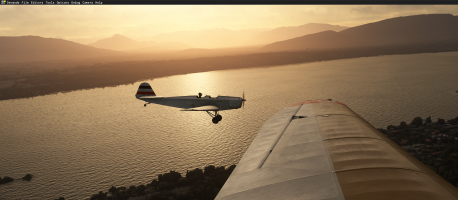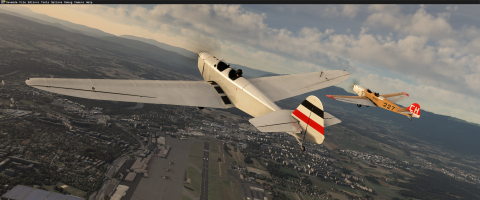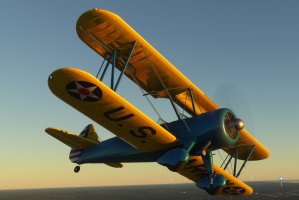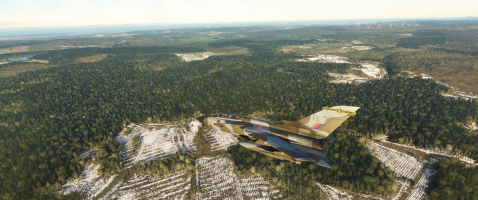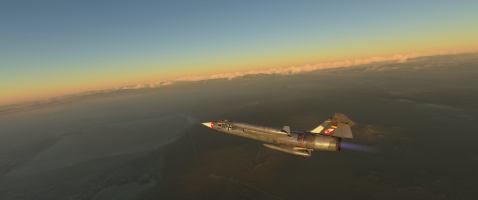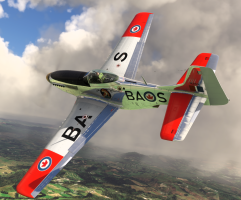-
There seems to be an uptick in Political comments in recent months. Those of us who are long time members of the site know that Political and Religious content has been banned for years. Nothing has changed. Please leave all political and religious comments out of the forums.
If you recently joined the forums you were not presented with this restriction in the terms of service. This was due to a conversion error when we went from vBulletin to Xenforo. We have updated our terms of service to reflect these corrections.
Please note any post refering to a politician will be considered political even if it is intended to be humor. Our experience is these topics have a way of dividing the forums and causing deep resentment among members. It is a poison to the community. We appreciate compliance with the rules.
The Staff of SOH
You are using an out of date browser. It may not display this or other websites correctly.
You should upgrade or use an alternative browser.
You should upgrade or use an alternative browser.
Screenshots
- Thread starter noddy
- Start date
Spook48
SOH-CM-2025
Messerschmitt Bf109K-4 "Gelbe 5" II./JG 52 for Microsoft Flight Simulator | MSFS
✓ Messerschmitt Bf109K-4 "Gelbe 5" II./JG 52 is a Microsoft Flight Simulator 2020 mod created by Spook48. This add-on provides a detailed repaint of the Messerschmitt Bf 109K-4 "Gelbe 5," representing the aircraft of II./JG 52 from May 1945. Designed for the FlyingIron Simulations Bf 109G-6...
I know that the majority over here doesn't like crosses on there airplanes so this one also has stars.
 snap001318 by Danny Best, on Flickr
snap001318 by Danny Best, on Flickr snap001327 by Danny Best, on Flickr
snap001327 by Danny Best, on Flickr snap001329 by Danny Best, on Flickr
snap001329 by Danny Best, on FlickrSpook48
SOH-CM-2025
I couldn't agree with you more, Jan .Personally I prefer the crosses. Lovely repaint(s) as always Danny!!
I also prefer that particular hood. I'd love to see a good K version and even more an E-4 version for MSFS!
Jan
J.Case
Members +
Now - that makes three of us! Not putting iron crosses on Spits or wild horses eitherPersonally I prefer the crosses. Lovely repaint(s) as always Danny!!
I also prefer that particular hood. I'd love to see a good K version and even more an E-4 version for MSFS!
Jan


And wile we are at it: Were are those big four engined aluminium clouds to have s/th to play with? (pun intended - after all it's still called a game by M$)
jason radz
Members +
jankees
SOH-CM-2025
 fedex 01 by JanKees Blom, on Flickr
fedex 01 by JanKees Blom, on Flickr fedex 04 by JanKees Blom, on Flickr
fedex 04 by JanKees Blom, on Flickr fedex 02 by JanKees Blom, on Flickr
fedex 02 by JanKees Blom, on FlickrFnerg
SOH-CM-2023
I think this is one of my best repaints -ever! Several weeks were spent on this Fighter Enterprises' Grand Champion Award restoration, depicting 424 Sqn. RCAF 9253/ BA-S. The Mustang itself is a real-life Pacific Theater veteran, rescued from a deteriorating condition from Venezuela in '95 before undergoing a 20 year restoration in Florida.
My AH model repaint got a new exterior PBR overhaul with new COMPLETE and NORMAL maps created. I researched through online and personal photos meticulously to get things as accurate (as the limitations of the modeling allow) as possible...since I can't find anymore errors, and I'm finally satisfied with the reflection and shine - I'm calling it done! Will be available at FS.to ( under my pseudonym DeltaSierra) probably tomorrow.
 P-51D NL951HB by Doug Smith, on Flickr
P-51D NL951HB by Doug Smith, on Flickr
My AH model repaint got a new exterior PBR overhaul with new COMPLETE and NORMAL maps created. I researched through online and personal photos meticulously to get things as accurate (as the limitations of the modeling allow) as possible...since I can't find anymore errors, and I'm finally satisfied with the reflection and shine - I'm calling it done! Will be available at FS.to ( under my pseudonym DeltaSierra) probably tomorrow.
 P-51D NL951HB by Doug Smith, on Flickr
P-51D NL951HB by Doug Smith, on Flickr
Last edited:
Fnerg
SOH-CM-2023
Bomber_12th
SOH-CM-2025
I think this is one of my best repaints -ever! Several weeks were spent on this Fighter Enterprises' Grand Champion Award restoration, depicting 424 Sqn. RCAF 9253/ BA-S. The Mustang itself is a real-life Pacific Theater veteran, rescued from a deteriorating condition from Venezuela in '95 before undergoing a 20 year restoration in Florida.
My AH model repaint got a new exterior PBR overhaul with new COMPLETE and NORMAL maps created. I researched through online and personal photos meticulously to get things as accurate (as the limitations of the modeling allow) as possible...since I can't find anymore errors, and I'm finally satisfied with the reflection and shine - I'm calling it done! Will be available at FS.to ( under my pseudonym DeltaSierra) probably tomorrow.
Excellent work on the repaint, Doug!
Your description of the real world aircraft is however not completely accurate. The real aircraft, P-51D-20-NA 44-72059, didn't serve in the Pacific Theatre. It is however a WWII European Theatre combat-vet, having served with the 384th Fighter Squadron, 364th Fighter Group, of the 8th Air Force, with fuselage code 5Y-P. Very soon after WWII it was sold to the Swedish Air Force (as serial no. Fv26142), followed by the Nicaraguan Air Force in 1955, was brought back to the US in '63 and later sold to the Bolivian Air Force in 1966, and eventually wound up in a Venezuelan Air Force Museum in 1984, from where it was recovered and brought back to the US in 1995. https://www.mustangsmustangs.com/p-51/survivors/serial/44-72059
The RCAF Mustang for which it is painted to represent, P-51D-30-NA 44-74582, was built too late to see service in WWII and was immediately placed into storage fresh from the factory. In 1950 it was brought out of storage, overhauled, and began service with the RCAF in Canada. After its time with the RCAF, it was sold onto the civilian market in the US in the late 1950s and has remained in civilian hands in the US ever since - it has been owned and operated by Joe Thibodeau of Denver, Colorado, since 1991. https://www.mustangsmustangs.com/p-51/survivors/serial/44-74582
Fnerg
SOH-CM-2023
Rats...Thanks for clarifying John, I'll make the changes. Wing_Z what a pretty shot! Thanks!Excellent work on the repaint, Doug!
Your description of the real world aircraft is however not completely accurate. The real aircraft, P-51D-20-NA 44-72059, didn't serve in the Pacific Theatre. It is however a WWII European Theatre combat-vet, having served with the 384th Fighter Squadron, 364th Fighter Group, of the 8th Air Force, with fuselage code 5Y-P. Very soon after WWII it was sold to the Swedish Air Force (as serial no. Fv26142), followed by the Nicaraguan Air Force in 1955, was brought back to the US in '63 and later sold to the Bolivian Air Force in 1966, and eventually wound up in a Venezuelan Air Force Museum in 1984, from where it was recovered and brought back to the US in 1995. https://www.mustangsmustangs.com/p-51/survivors/serial/44-72059
The RCAF Mustang for which it is painted to represent, P-51D-30-NA 44-74582, was built too late to see service in WWII and was immediately placed into storage fresh from the factory. In 1950 it was brought out of storage, overhauled, and began service with the RCAF in Canada. After its time with the RCAF, it was sold onto the civilian market in the US in the late 1950s and has remained in civilian hands in the US ever since - it has been owned and operated by Joe Thibodeau of Denver, Colorado, since 1991. https://www.mustangsmustangs.com/p-51/survivors/serial/44-74582
Last edited:
You might be seeing that some control surfaces are fabric covered, not metal. I believe all P-51s had a fabric rudder and the elevators varied depending on date of manufacture or retrofit. The elevators switched to metal with the P-51D-20-NA block and were often retrofitted to earlier blocks. The retrofit would not have happened before February or March 1945 at the earliest.Looking good... I am wondering what's the backstory of the Matte wing panels and rudder?
I'm sure John can give all details!
Bomber_12th
SOH-CM-2025
Looking good... I am wondering what's the backstory of the Matte wing panels and rudder?
There are a few different answers to give to that question:
- The rudder on all production Mustangs was fabric-covered (the elevators were as well, on all Mustangs up to P-51D-25-NA production, when they were switched to metal, and changed to metal on earlier P-51Ds still in service). Therefore, they needed some type of painted finish, and when the change occurred at the start of 1944 with USAAF aircraft were no longer being painted in camouflage from the factory and simply left bare, the fabric surfaces were finished in dull silver to most closely match the appearance of bare metal.
- During original factory production, every P-51 had roughly the forward 40% of the wing sprayed with surfacer (which filled in the rivets), and the panel lines and screws in this area of the wing were filled with putty and sanded smooth. When the aircraft were still being painted in camouflage, this wing treatment was simply painted over with the camouflage paint. However, from the start of the 1944 onward, when the aircraft were left bare metal, they still needed to paint the wings on the P-51s in order to protect the wing profiling achieved with the surfacer and filler. Therefore, the wings were painted dull silver in order to most closely match the bare metal finish of the rest of the aircraft. Since the landing gear doors, fuel tank cover panels, flaps and ailerons didn't receive the surfacer/filler treatment, they remained bare metal.
- Switching to the modern day restorations (as in the case of the subject of Doug's repaint), there are essentially three categories of bare metal Mustangs flying today with silver-painted wings. For one, there are a select few modern bare metal P-51 restorations that are done very accurately, with the wings filled/profiled and painted dull silver, as close to original 1940s production as possible (such as Sierra Sue II, Lope's Hope 3rd, Upupa Epops, and Happy Jack's Go Buggy). Then, there are a number of other restored bare metal Mustangs that don't have the wings filled/profiled, but still have the wings painted silver in order to have a close appearance to original factory/1940s look. However, many other bare metal Mustangs flying today, especially those with highly polished fuselages and silver-painted wings, do so not just because the wings were painted silver originally in the '40s, but in large part because it cuts down on the amount of polishing/upkeep required than there would be if the wings were left bare metal/polished.
Last edited:




















